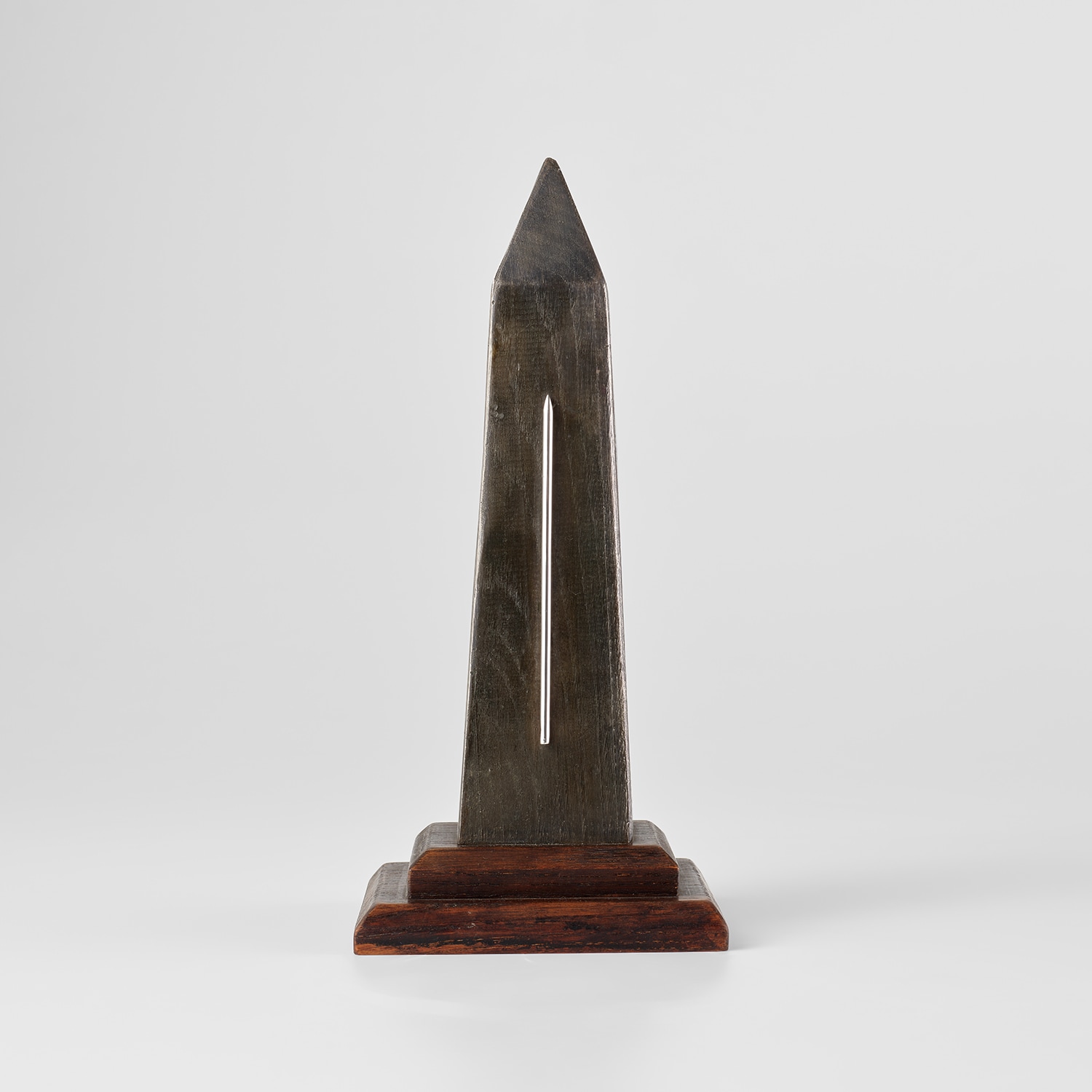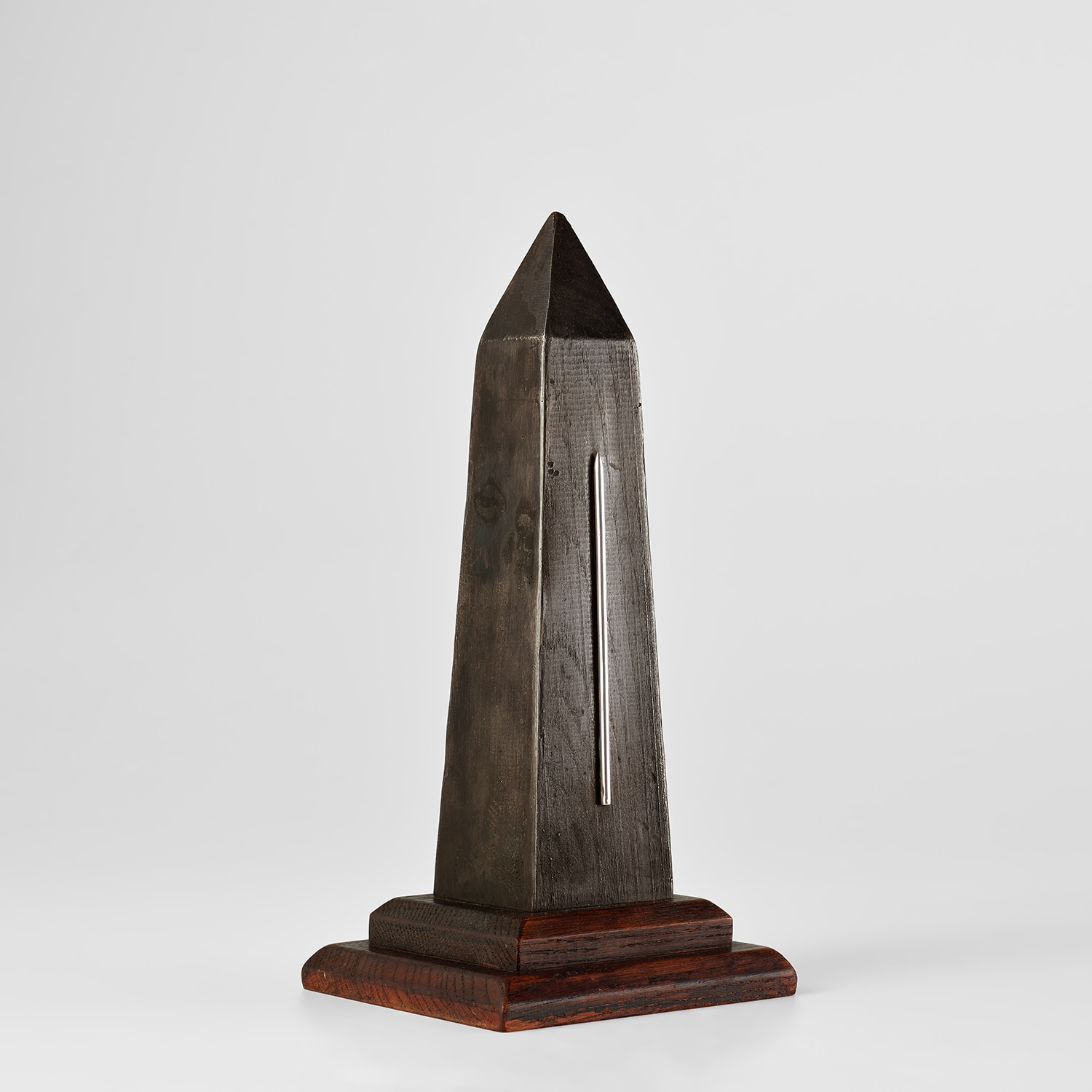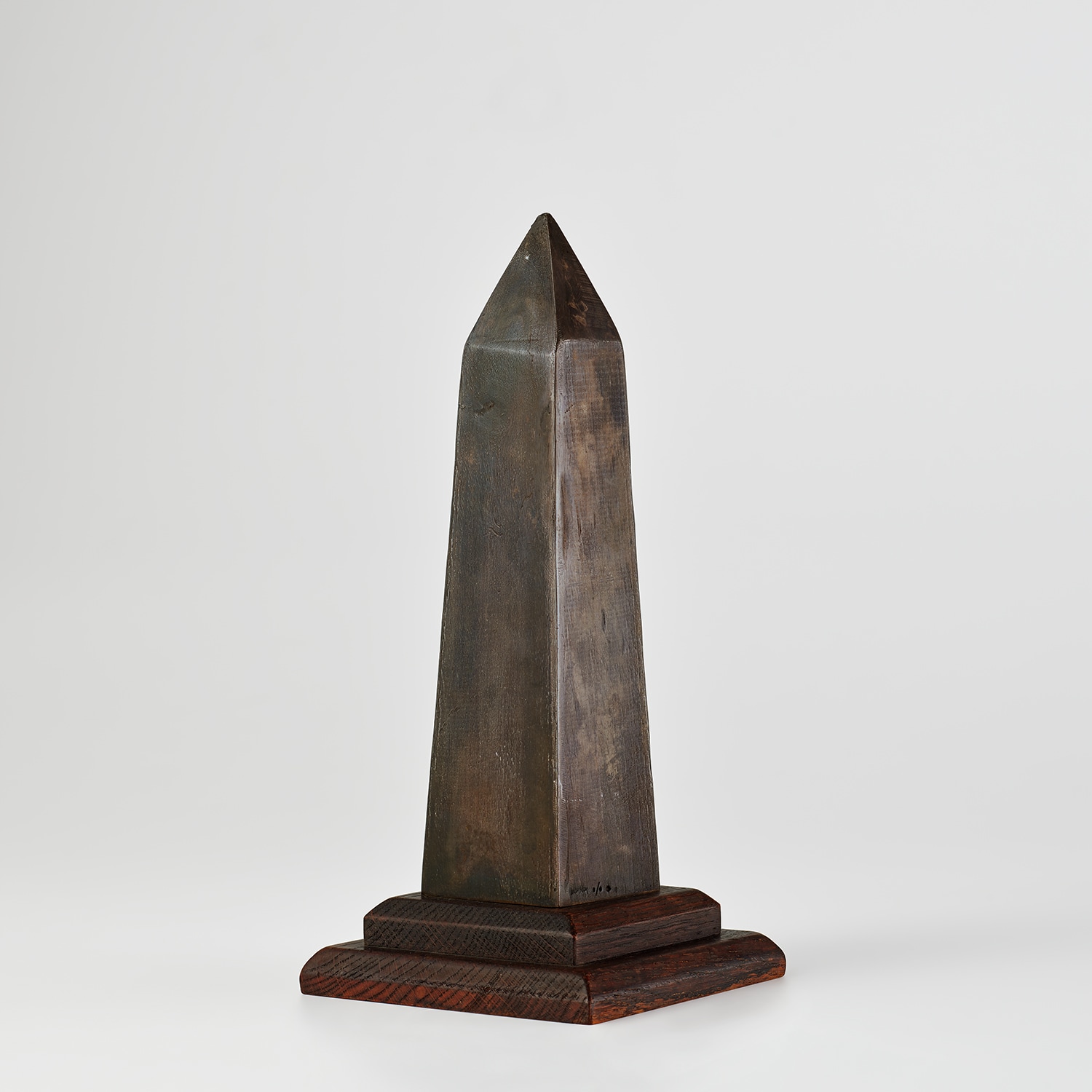





Property from a Private European Collection
159
Man Ray
Proverb
- Estimate
- £10,000 - 15,000Ω
Lot Details
Bronze multiple with silver rod, mounted on wooden base.
1973
32.5 x 15.3 x 15 cm (12 3/4 x 6 x 5 7/8 in.)
With incised signature and numbering 6/9 on the reverse (there were also 3 artist's proofs), bearing two silver hallmarks, published by Richard Binder, Brussels, after the original object of 1944.
Andrew Strauss and Timothy Baum of the Man Ray Expertise Committee have confirmed the authenticity of this work, and that the edition of this work will be included in the Catalogue of Objects & Sculpture of Man Ray, currently in preparation.
Andrew Strauss and Timothy Baum of the Man Ray Expertise Committee have confirmed the authenticity of this work, and that the edition of this work will be included in the Catalogue of Objects & Sculpture of Man Ray, currently in preparation.
Specialist